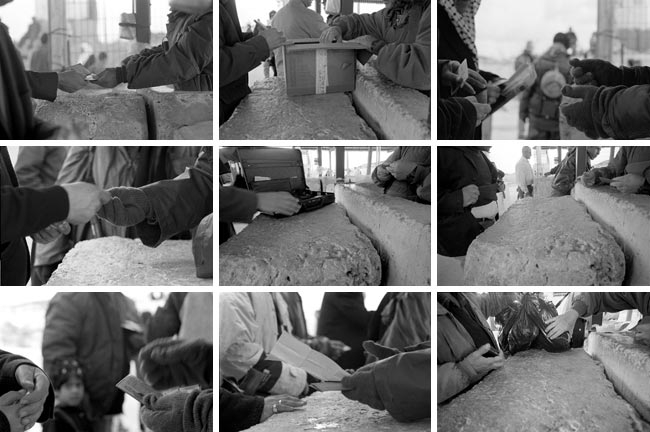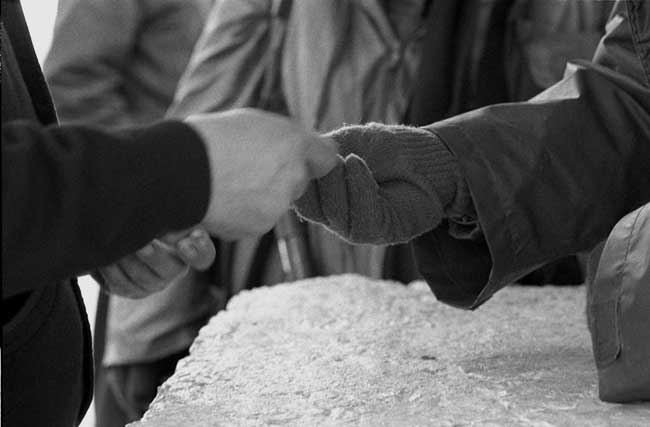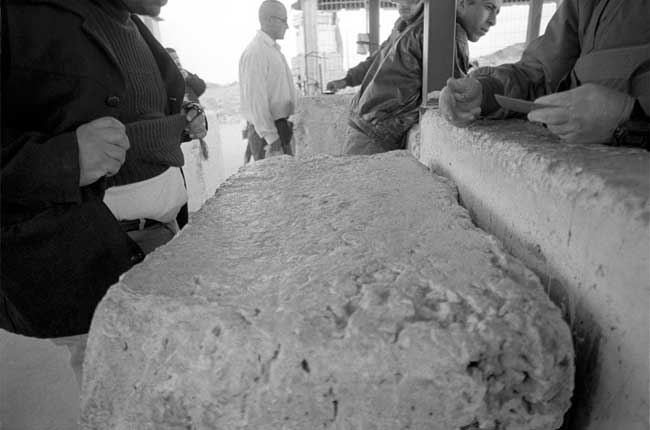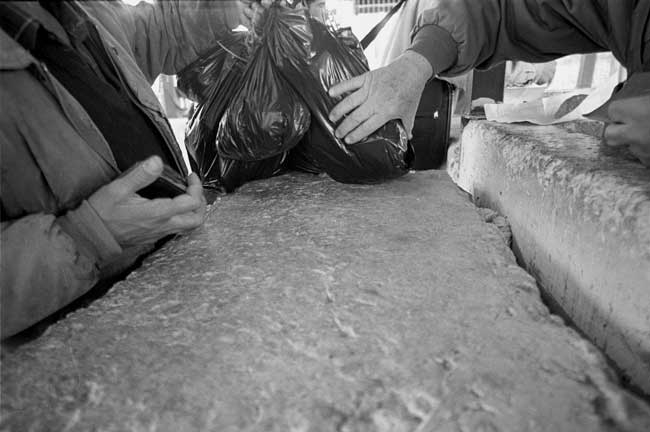After having worked as a photojournalist for the greatest news agencies, Rula Halawani no longer relates current “events” but daily life through art photography. The checkpoint, cornerstone of the Israeli territorial occupation policy, has become a data intrinsically linked to the Palestinian experience. The Qalandiya checkpoint, installed in the Summer of 2001 and where Rula Halawani took these pictures, is a very important point of passage between Jerusalem and Ramallah. In the Winter of 2005, it was modernized, strengthened, and integrated into the separation wall.
The very close shots single out the node of contact between the soldiers and the candidates for crossing. They designate the space of a transaction, obviously unequal, where power and the authority face vulnerability and uncertainty. From either side of a counter made of concrete (which, according to the viewpoint, can evoke a wall or an altar), one witnesses, almost as a voyeur, the presentation of the documents, the intrusive inspection of goods, objects and bodies. The systematic character of the viewpoint signals the banality of this collective experiment, a customary, staged and ritualized “cultural fact”.
The stage when ink is put on the hands (such expressive endings) enables, in spite of the recurrences of the protocol and the anonymity of the participants, to feel the humanity of the attitudes and to perceive individual reactions to an undifferentiated violence. These either strong or discreet gestures both offer and reveal the tale of the essential mechanism of colonial power: dependence, dispossession of time and space, invasion of intimacy.
Irène Burkel
Translated by Valérie Vivancos





Follow us on: